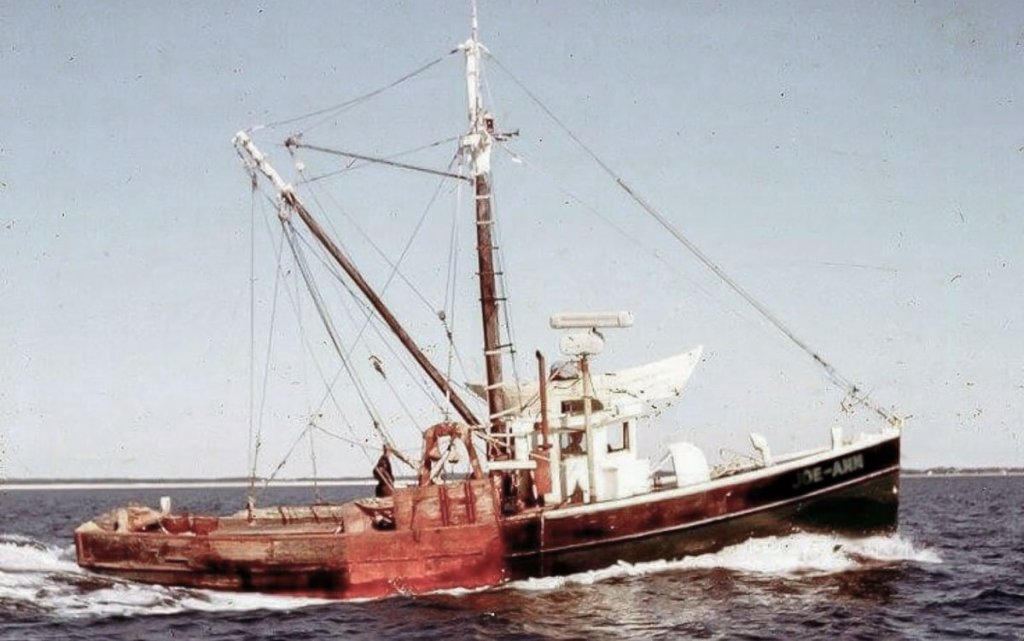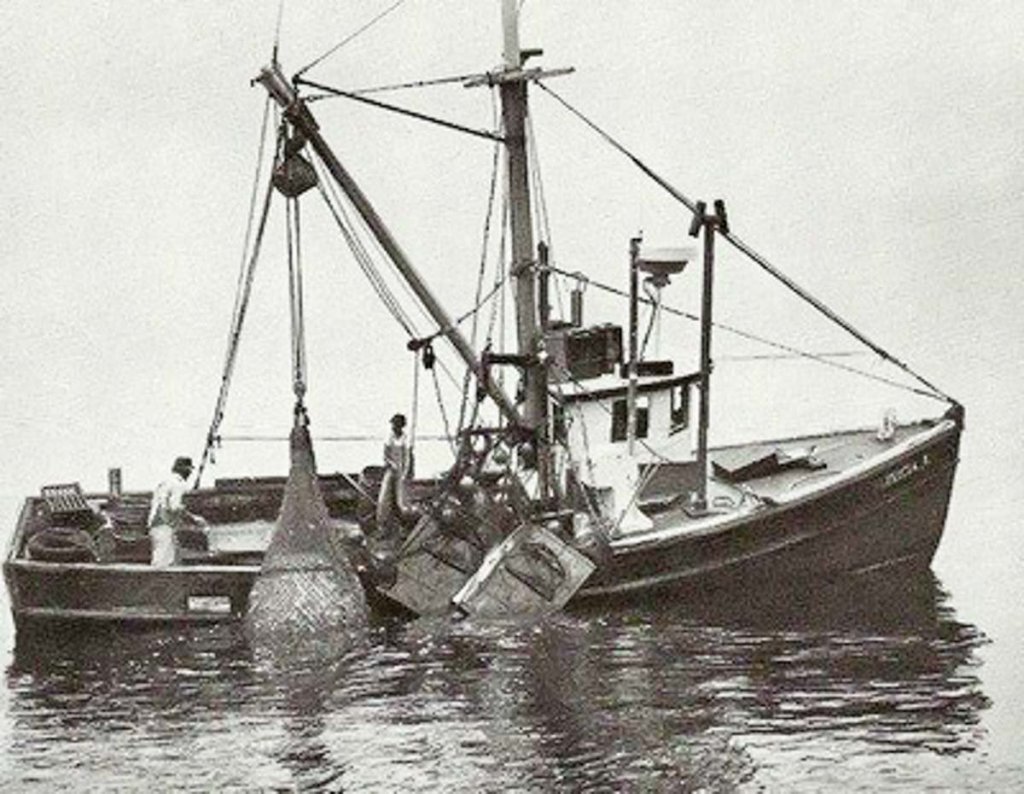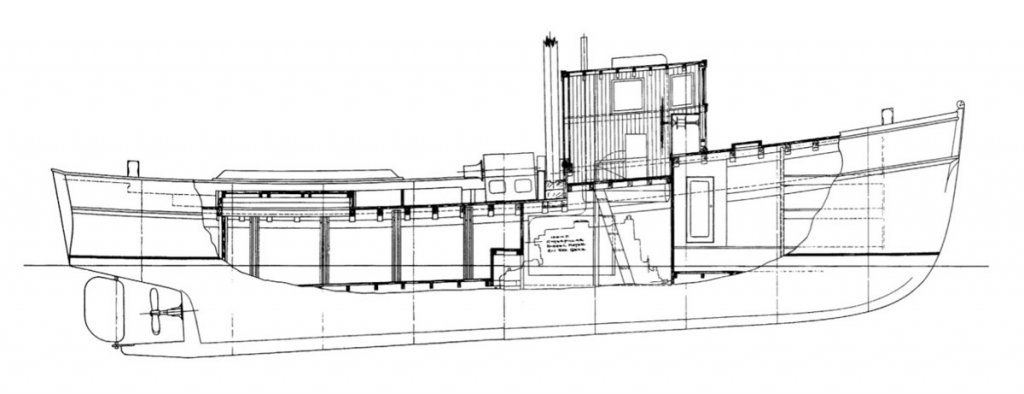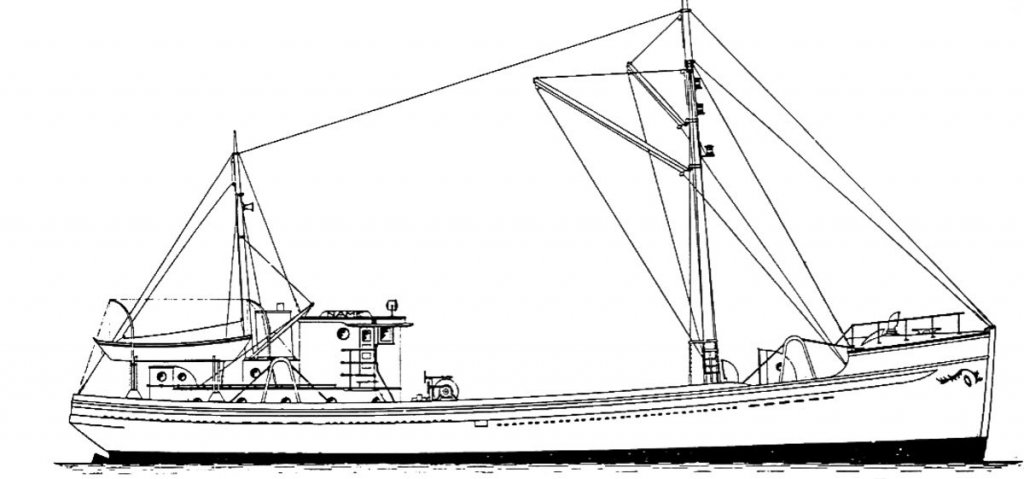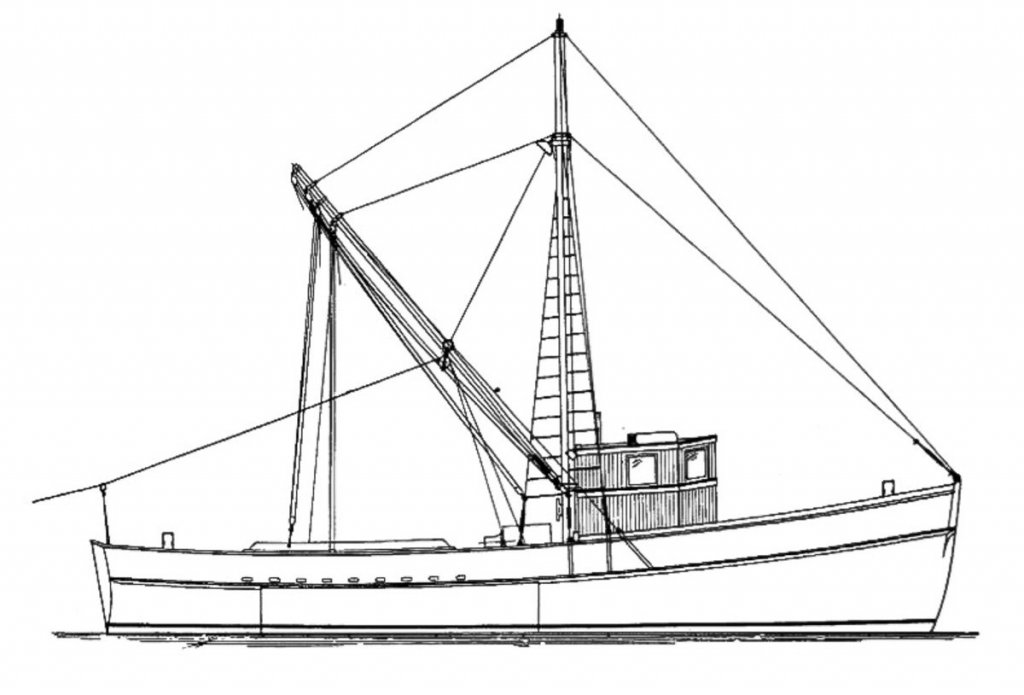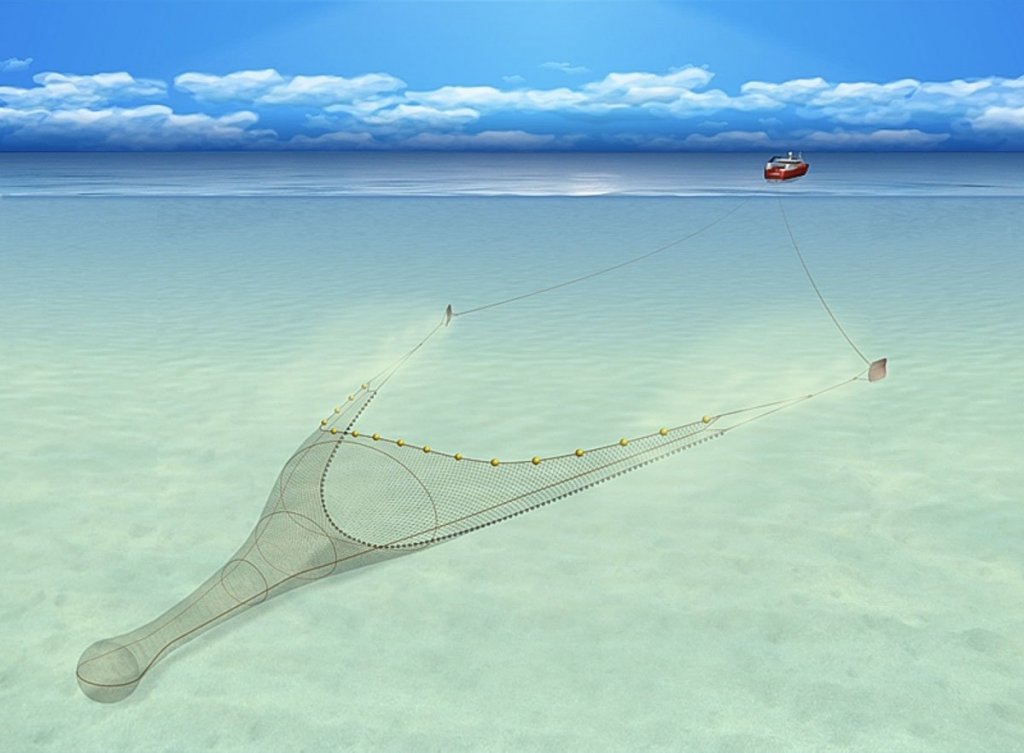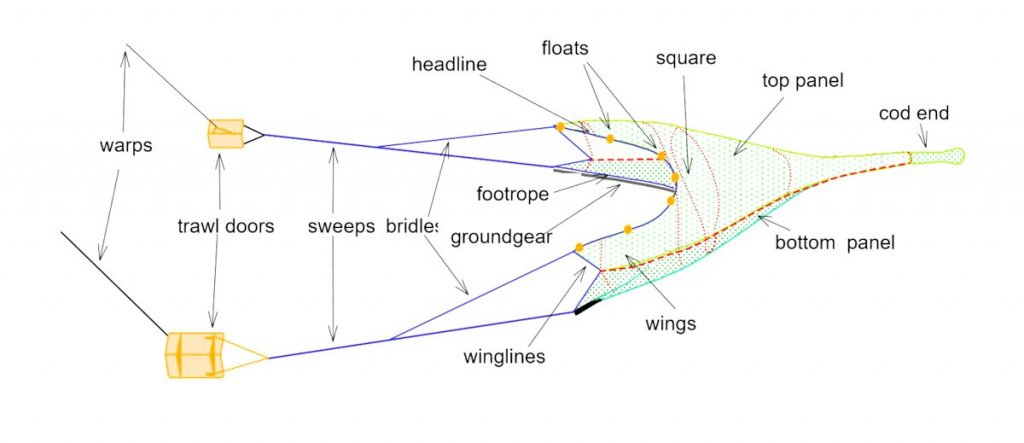Search the Community
Showing results for tags 'dragger'.
-
A “dragger” is a fishing vessel that tows a trawl net. A trawl can be dragged along the bottom of the seafloor, just above the bottom, or in midwater depending on the target species. In the early 1920’s the Connecticut fishing industry began producing what is known today as the Western-rig dragger. These boats were not the first pilothouse forward fishing boats built in New England, but due to their small size, the design was affordable and perfectly suited to independent fisherman working the local inshore waters. These small fishing draggers were typically less than 60 feet in length. Built of steam bent oak frames and planked with yellow pine or white oak, they were both light and strong. The popularity of this Western-rig design quickly spread and by the 1930’s could be found in many ports of southern New England. The use of these boats for ground fishing was so prevalent in the port of Stonington, Connecticut, that the design commonly became known as “Stonington Draggers.” Western-Rig - Winthrop Warner Collection, Mystic Seaport Museum Western-Rig vs. Eastern-Rig The difference between a Western-rig and Eastern-rig boat is one of deck arrangement and not the gear used in catching fish. Western-rig boats have the pilothouse positioned in the bow with the working deck aft. On Eastern-rig boats the working deck is positioned mid-ship with the pilothouse in the stern. Eastern-Rig - Albert E. Condon Collection, Mystic Seaport Museum The Eastern-rig deck arrangement evolved from the New England fishing schooners and “auxiliary schooners” which required the helm to be over or near the rudder. But once fishing vessels became fully powered with a tiller system and rudder quadrant installed, the pilothouse could be positioned anywhere. Enter the Western-rig. Western-Rig - Winthrop Warner Collection, Mystic Seaport Museum The Western-rig has some advantages. With the pilothouse forward in the bow, there is easier access to the fo’c’sle and the engine room. It also provides better visibility for the captain, and the crew is somewhat safer in bad weather working behind the pilothouse rather than in front of it. One disadvantage to having the pilothouse in the bow is that the windows are more vulnerable to being smashed out in bad weather. In the early days, the Western-rig boats were small and only used for inshore fishing while the larger more powerful Eastern-rig boats fished offshore. In time however, the Western-rig boats grew in size and power to become today’s offshore stern trawlers and the dominant fishing vessel type. The Otter Trawl Even though the Western-rig Stonington boats had an open aft deck and a square stern, most continued to drag off the side. And like the Eastern-rig boats, the gear most commonly used was the “Otter Trawl.” Otter trawling was invented in England and came to America around 1910 – give or take. It derived its name from the “otter board” which was the name given to a sheering device that was being used for “hook and line” lake fishing in Ireland. Like a modern day planer board, this rectangular wood board would sheer on the water surface and course away from the direction it was being pulled. In commercial fishing, the otter boards are industrial scale and can weigh hundreds of pounds. Two such boards (commonly called doors) are used to hold open the mouth of the trawl net. Like underwater kites, the otter boards are setup to push outward, away from each other, as the hydrodynamic pressure of moving water acts upon them. This was a major advancement over the “beam” trawl, which as the name implies requires a beam of some sort to keep the mouth of the net spread open. Needing a beam also severely limited the size of the trawl being towed and was cumbersome and impractical for a smaller boat. Now with the otter trawl, a single small boat, like the Stonington dragger, could tow a net limited only by its engine power. The Otter Trawl - above & below Copyright Seafish The drawings, inspiration and photos for this build come from several sources and the model built from them will be a vessel typical of the design but not of a single example. The hull will be built from one source, while some detailing and features may come from elsewhere. All features and details will depict what would have been found on actual boats – nothing will be added for the sake of visual interest. This model will be weathered to show honest wear. It will not be a wreck, but I have never seen a pristine commercial fishing vessel. Hard working fisherman worked these boats hard. I hope to capture that feel without making a caricature out of it. Thanks for taking a look. Gary
About us
Modelshipworld - Advancing Ship Modeling through Research
SSL Secured
Your security is important for us so this Website is SSL-Secured
NRG Mailing Address
Nautical Research Guild
237 South Lincoln Street
Westmont IL, 60559-1917
Model Ship World ® and the MSW logo are Registered Trademarks, and belong to the Nautical Research Guild (United States Patent and Trademark Office: No. 6,929,264 & No. 6,929,274, registered Dec. 20, 2022)
Helpful Links
About the NRG
If you enjoy building ship models that are historically accurate as well as beautiful, then The Nautical Research Guild (NRG) is just right for you.
The Guild is a non-profit educational organization whose mission is to “Advance Ship Modeling Through Research”. We provide support to our members in their efforts to raise the quality of their model ships.
The Nautical Research Guild has published our world-renowned quarterly magazine, The Nautical Research Journal, since 1955. The pages of the Journal are full of articles by accomplished ship modelers who show you how they create those exquisite details on their models, and by maritime historians who show you the correct details to build. The Journal is available in both print and digital editions. Go to the NRG web site (www.thenrg.org) to download a complimentary digital copy of the Journal. The NRG also publishes plan sets, books and compilations of back issues of the Journal and the former Ships in Scale and Model Ship Builder magazines.

